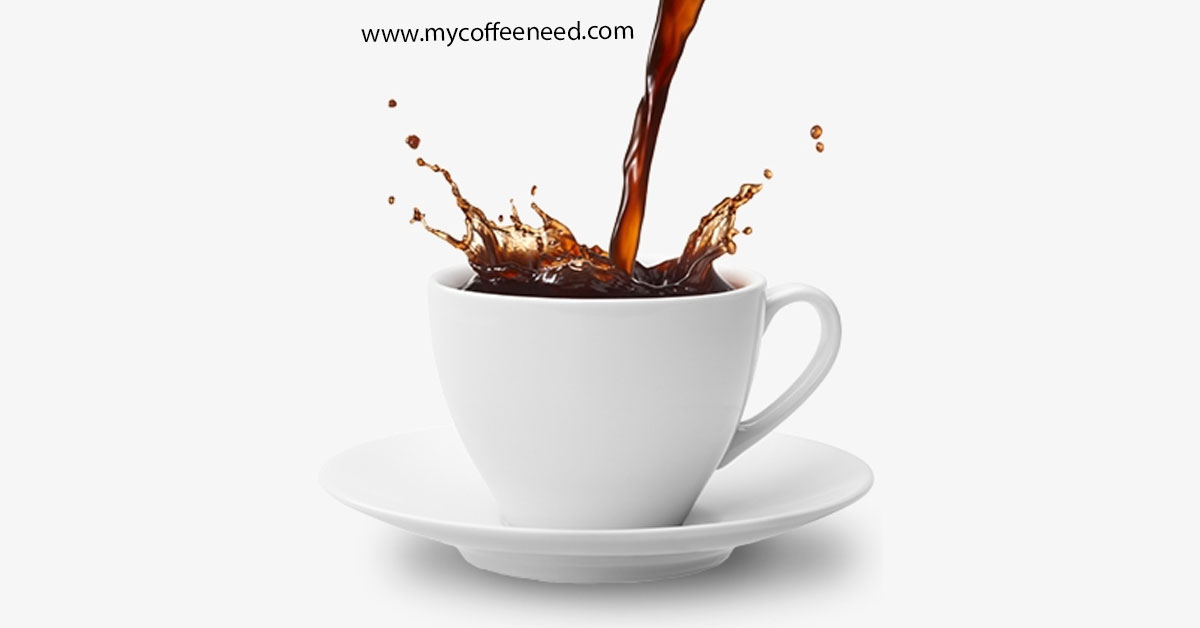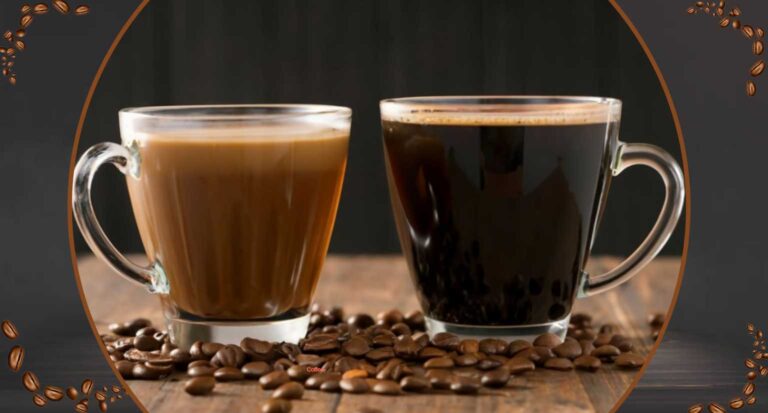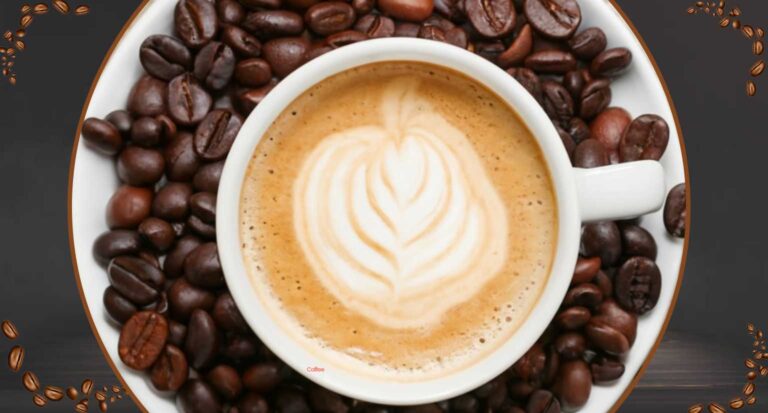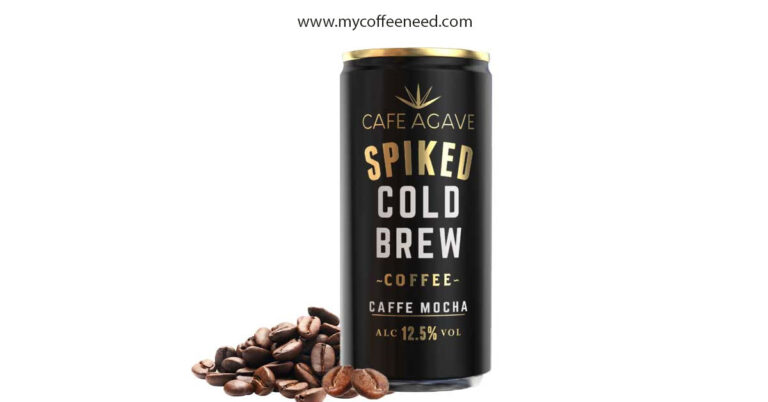How much coffee for 8 cups?
For coffee lovers, that first sip of morning brew is nothing short of a ritual. It’s the aromatic wake-up call that jumpstarts the day and gets the creative juices flowing.
But achieving that perfect cup isn’t just about throwing in some coffee grounds and hot water. It’s a delicate balance of science and art, and it all starts with one fundamental question: “How much coffee for 8 cups?” we’ll delve into the secrets of coffee brewing, uncovering the nuances of the coffee-to-water ratio, grind size, brewing methods, and more.
Whether you’re a coffee novice or a seasoned coffee lover, this guide will empower you to brew that ideal pot of coffee every time.
So, grab your favorite coffee mug, and let’s embark on a journey to unlock the perfect cup of joe that tantalizes your taste buds and fuels your day.
Cracking the Coffee Code: Ratios Demystified
Before diving into the specifics of brewing 8 cups of coffee, it’s crucial to grasp the concept of coffee ratios. These ratios are the secret sauce behind a delightful coffee experience.
Essentially, they dictate the precise measurements of coffee beans and water required to achieve your desired strength and flavor.
Here, we’ll explore the elements that make up the coffee ratio, including the golden ratio, ounces of water, grams of coffee, and the role of personal preference in this equation.
1. The Golden Ratio
The golden ratio in coffee brewing is the revered benchmark for achieving balance and flavor perfection. It suggests that for every 6 ounces (180 ml) of water, you should use 1 to 2 tablespoons of coffee grounds.
This ratio offers a solid starting point for most coffee lovers, striking a harmonious balance between strength and flavor. However, remember that personal preference plays a significant role, so feel free to tweak this ratio to your taste.
2. Ounces of Water vs. Grams of Coffee
To ensure precision in your brewing, consider measuring your ingredients by weight. The standard recommendation is to use around 1 to 2 grams of coffee per ounce of water.
This practice allows you to maintain consistency in your brews and fine-tune the flavor profile according to your preference.
3. Personal Preference Matters
Coffee brewing is an art, and your taste buds are the ultimate judges. Some coffee lovers prefer a bolder, more robust brew, while others savor a milder, smoother cup.
Experimentation is key, so don’t be afraid to adjust the coffee-to-water ratio to align with your preferences. Remember, there’s no one-size-fits-all solution when it comes to coffee.
Now that we’ve laid the foundation by understanding coffee ratios, we’ll explore the various factors that influence these ratios in the subsequent sections.
From brewing methods to grind size, each element plays a pivotal role in crafting your perfect cup of coffee. So, let’s dive deeper into the world of coffee brewing and uncover the secrets to achieving that sublime coffee flavor you crave.
Choosing the Right Coffee
The Bean Behind the Brew
Before you embark on your quest for the perfect 8 cups of coffee, it’s essential to choose the right coffee beans.
The type of coffee you select lays the foundation for your entire brewing journey, influencing the flavor, aroma, and overall satisfaction of your cup. So, let’s explore the critical factors to consider when choosing the ideal coffee beans.
1. Coffee Bean Types
Coffee beans generally fall into two primary categories: Arabica and Robusta. Arabica beans are known for their mild, nuanced flavors and are often considered the gold standard in specialty coffee.
On the other hand, Robusta beans are bolder and more robust in flavor, often carrying a hint of bitterness. Your choice between these beans will significantly impact the final taste of your brew.
2. Roast Level
The roast level determines the color and flavor profile of your coffee beans. Common roast levels include light, medium, medium-dark, and dark.
Light roasts tend to preserve the bean’s original flavors, while dark roasts develop deeper, smokier notes. The ideal roast level is a matter of personal preference, so consider experimenting to find your perfect match.
3. Whole Bean vs. Ground Coffee
The freshness and flavor of your coffee also depend on whether you opt for whole bean or pre-ground coffee. Whole bean coffee retains its flavor and aroma better due to less exposure to oxygen. Grinding your beans just before brewing can enhance the overall quality of your coffee.
4. Single-Origin vs. Blends
Single-origin coffees come from a specific region or even a single farm, highlighting the unique flavors of that location. Coffee blends, on the other hand, combine beans from multiple sources to create a balanced flavor profile. Exploring both options can be an exciting journey for your taste buds.
5. Consider Your Coffee Lover Type
Are you an adventurous coffee explorer, seeking out rare and exotic beans? Or do you prefer the familiar comfort of a traditional brew? Your personal coffee profile plays a significant role in selecting the right beans for your 8-cup adventure.
In summary, choosing the right coffee beans is the crucial first step in crafting your perfect cup. It’s a decision that reflects your taste preferences and sets the stage for a delightful coffee experience.
As you venture further into the world of coffee brewing, remember that the beans you select are just the beginning.
The magic happens when you combine them with the right brewing method and ratios, which we’ll explore in detail in the following sections. So, get ready to unleash the full potential of your chosen coffee beans as we continue our journey towards the ultimate cup of coffee.
Methods for Perfection
Once you’ve selected the perfect coffee beans, it’s time to explore the various brewing methods at your disposal.
Each method offers a unique experience, allowing you to tailor your coffee to your specific taste preferences. Let’s dive into some popular brewing methods and discover how they can help you achieve the perfect 8 cups of coffee.
1. Drip Coffee Maker
The drip coffee maker is a staple in many households, known for its convenience and consistency. It operates by dripping hot water over a filter containing coffee grounds, resulting in a clean and well-balanced brew.
To make the most of your drip coffee maker, ensure you use the right grind size, typically medium, and adhere to the golden ratio of coffee to water.
2. French Press
For those seeking a robust and full-bodied coffee, the French press is a go-to choice. This method involves steeping coarsely ground coffee in hot water and then separating the grounds by pressing down a metal or mesh plunger. It allows you to control the steeping time and tailor the coffee’s strength to your liking.
3. Cold Brew
Ideal for warm summer days, cold brew is a refreshing option that’s brewed with cold water over an extended period, usually 12-24 hours.
The result is a smooth and less acidic coffee concentrate that can be diluted to your preferred strength. Experiment with the dilution ratio to find your sweet spot.
4. Espresso Machines
Espresso lovers can rejoice, as espresso machines offer the means to craft strong and concentrated coffee shots.
These machines force hot water through finely ground coffee under pressure, resulting in a bold and intense flavor. You can dilute espresso shots with hot water to create a milder brew.
5. Pour-Over
Pour-over brewing is a manual method that grants you complete control over the brewing process. It involves pouring hot water evenly over coffee grounds in a filter, allowing for precise extraction and flavor customization. It’s a favorite among coffee aficionados who appreciate the hands-on approach.
6. Specialty Methods
Beyond these common methods, there are various specialty brewing methods like Aero Press, Chemex, and siphon brewing, each offering its unique charm.
Exploring these methods can lead to delightful discoveries and help you fine-tune your coffee to perfection.
When choosing a brewing method, consider your taste preferences, the time you’re willing to invest, and the equipment you have on hand.
Remember that the right method can make all the difference in achieving your desired coffee flavor. In the next sections, we’ll delve into crucial factors like grind size and water temperature, which further influence the brewing process.
So, whether you’re a fan of the classic drip coffee maker or a curious explorer of niche methods, the perfect cup of coffee awaits your expert touch.
The Tools of Coffee Artistry
Achieving the perfect 8 cups of coffee isn’t solely about selecting the finest beans and mastering brewing methods.
It also hinges on precision in measurement. Accurate measurements of coffee grounds, water, and other variables are vital in ensuring consistency and flavor excellence. Here, we explore the measurement tools that will elevate your coffee brewing game.
1. Kitchen Scale
A kitchen scale is your secret weapon in the quest for the ideal coffee-to-water ratio. It provides precise measurements in grams, allowing you to fine-tune your brewing process with accuracy. Whether you’re measuring coffee beans or water, a scale is an indispensable tool for perfectionists.
2. Standard Measuring Cups
For those who prefer a simpler approach, standard measuring cups can be used to measure both coffee grounds and water.
Keep in mind that these cups provide volume measurements, so ensure you use the same cup size consistently to maintain accuracy.
3. Coffee Scale
A coffee scale is a specialized tool designed for coffee enthusiasts. It often includes features like a timer and a tare function, making it easy to measure coffee grounds and water with precision. Some coffee scales are even designed to fit neatly on your brewing equipment.
4. Tablespoon and Scoops
While not as precise as scales, tablespoons and coffee scoops can serve as convenient measurement tools. They’re especially useful when you’re in a hurry or don’t have access to a scale.
Keep in mind that using consistent scoops or tablespoons is crucial for maintaining the desired coffee-to-water ratio.
5. Glass Carafe with Volume Markings
If you’re using a pour-over or manual brewing method, a glass carafe with volume markings can be a handy tool. It allows you to measure water directly as you pour it over your coffee grounds, ensuring you hit the mark for your preferred brew strength.
6. Grams Conversion Chart
To bridge the gap between volume and weight measurements, consider having a grams conversion chart on hand. This chart can help you quickly convert volume measurements to grams, ensuring consistency in your brews.
Precise measurement tools empower you to replicate your favorite brew consistently. They enable you to dial in on the coffee-to-water ratio that suits your taste, ensuring that each cup of coffee is a masterpiece.
In the next sections, we’ll explore the role of variables like water temperature, grind size, and brewing time, which further impact the outcome of your brew.
With the right tools and knowledge in your arsenal, you’re well on your way to brewing 8 cups of coffee that delight your senses with every sip.
Personalizing Your Coffee Experience
Your Coffee, Your Way
Coffee brewing isn’t just a science; it’s an art that allows you to express your unique preferences and indulge your taste buds.
While general guidelines and measurements provide an excellent starting point, personalization is the key to creating a coffee experience that resonates with you. Here, we explore how you can personalize your coffee in various ways.
1. Water Temperature
The temperature of your water can significantly influence your coffee’s flavor profile. While the general recommendation is to use water between 195°F to 205°F (90°C to 96°C), you can adjust this based on your taste. Cooler water can yield a milder brew, while hotter water can extract bolder flavors.
2. Grind Size
The grind size of your coffee beans plays a crucial role in extraction. Finer grinds extract flavors quickly and yield a stronger brew, while coarser grinds result in a milder cup. Experiment with grind sizes to find the one that aligns with your taste preferences.
3. Brewing Time
The duration of your brewing process can be adjusted to fine-tune your coffee’s strength and flavor. Longer brewing times typically lead to stronger coffee, while shorter times result in a milder cup. This flexibility allows you to cater to your unique palate.
4. Coffee-to-Water Ratio
As discussed earlier, the coffee-to-water ratio is a critical factor in brewing. Personalize it based on your taste, whether you prefer a bolder or milder cup. Don’t hesitate to deviate from the standard ratios to create your ideal brew.
5. Experiment with Bean Varieties
Coffee beans come in a wide array of flavors, each influenced by factors like origin, roast level, and processing methods. Explore different bean varieties to discover new taste dimensions and find your favorites.
6. Add Flavors and Extras
If you enjoy flavored coffee, consider adding ingredients like cinnamon, vanilla, or cocoa to your brew. These additions can elevate your coffee’s aroma and taste, creating a personalized flavor experience.
7. Customize Your Coffee Toppings
The toppings you choose, such as whipped cream, chocolate shavings, or flavored syrups, can transform your coffee into a decadent treat. Experiment with various combinations to create a signature coffee creation.
8. Try Different Milk Options
The type of milk or creamer you use can greatly impact the texture and taste of your coffee. Whether it’s dairy milk, almond milk, or oat milk, exploring different options can lead to delightful discoveries.
Personalizing your coffee allows you to make each cup a reflection of your unique taste and preferences. It’s a journey of experimentation and discovery, where you get to be the coffee maestro, crafting brews that bring you joy with every sip.
As you embark on this quest for the perfect 8 cups of coffee, remember that there are no right or wrong answers—only what tastes best to you. In the next sections, we’ll delve into some general guidelines and expert tips to help you fine-tune your brewing process further.
So, prepare to elevate your coffee game and savor the satisfaction of a truly customized coffee experience.
Important Considerations in Coffee Brewing
Expert Tips and General Guidelines
While personalization is a delightful aspect of coffee brewing, there are several critical considerations and expert tips that can help you consistently craft exceptional 8 cups of coffee. Let’s explore these essential factors that will elevate your coffee game.
1. Water Quality
Start with good water. The quality of your water can significantly impact the taste of your coffee. Use filtered or bottled water that is free from impurities, chlorine, or unpleasant odors.
2. Cleanliness Is Key
Ensure your coffee equipment, such as your coffee maker or French press, is thoroughly clean. Residue and old coffee oils can impart off-flavors to your brew.
3. Storage Matters
Store your coffee beans or grounds in an airtight container away from direct sunlight and moisture. This helps preserve their freshness and flavor.
4. Consistent Grind
Invest in a quality burr grinder for a consistent grind size. Consistency ensures even extraction, leading to a balanced and flavorful brew.
5. Timing Is Everything
Keep track of your brewing time. Over-extraction (brewing for too long) can result in bitterness, while under-extraction (brewing for too short a time) can lead to a sour taste.
6. The Blooming Phase
For methods like pour-over and French press, consider adding a “bloom” phase. This involves wetting the coffee grounds and allowing them to release gas for about 30 seconds before continuing the brew.
7. Experiment with Water Flow
In pour-over methods, controlling the water flow rate can impact the flavor. Try adjusting the speed at which you pour water over the grounds to influence extraction.
8. Use a Timer
Use a timer to ensure consistency in brewing time. Consistency is key to replicating your ideal cup of coffee.
9. Keep It Fresh
Coffee is at its best when freshly brewed. Aim to consume your coffee shortly after brewing to savor its peak flavors.
10. Practice Patience
Allow your coffee to cool slightly before sipping. Extremely hot coffee can mask subtle flavors, while slightly cooler coffee may reveal more nuances.
11. Share and Learn
Engage with the coffee community to learn from others and share your experiences. Coffee lovers often have valuable insights and recommendations.
12. Keep an Open Mind
Be open to trying new beans, brewing methods, and flavor profiles. Exploring the world of coffee is a never-ending adventure.
By paying attention to these important considerations and expert tips, you’ll fine-tune your coffee brewing skills and consistently deliver 8 cups of coffee that impress and satisfy.
Remember that coffee is as much a science as it is an art, and the journey to mastering it is part of the pleasure.
As we conclude this guide, take pride in your newfound expertise and enjoy the rewarding experience of brewing the perfect cup of coffee, tailored to your taste and preferences. Cheers to many delightful mornings and shared coffee moments ahead.
The Role of Specialty Coffee Associations
Coffee Enthusiasts Unite
Specialty coffee associations play a vital role in the world of coffee, serving as beacons of knowledge, quality, and community for coffee lovers and industry professionals alike.
In this section, we’ll explore the significant role these associations play in enhancing your coffee experience and supporting the global coffee community.
1. Setting Quality Standards
One of the primary roles of specialty coffee associations is to establish and maintain quality standards for coffee beans.
They define what constitutes “specialty coffee” based on factors like flavor, aroma, and overall quality. These standards serve as a benchmark for coffee growers, roasters, and consumers to ensure they are getting the best possible beans.
2. Education and Training
Specialty coffee associations provide a wealth of educational resources and training opportunities for coffee professionals and enthusiasts.
They offer courses on everything from coffee farming and processing to brewing techniques and sensory analysis. These programs empower individuals to deepen their knowledge and expertise in the world of coffee.
3. Certification Programs
Many specialty coffee associations offer certification programs that validate the skills and knowledge of coffee professionals.
These certifications are highly regarded in the industry and help individuals showcase their commitment to quality and excellence.
4. Promoting Sustainability
Specialty coffee associations often champion sustainability efforts within the coffee industry. They work to ensure fair and ethical practices along the entire coffee supply chain, from the farmer to the consumer.
This includes initiatives to promote fair trade, environmentally-friendly farming practices, and equitable compensation for coffee producers.
5. Research and Development
These associations invest in research and development to advance coffee knowledge and practices. They conduct studies on coffee cultivation, processing, and brewing techniques, leading to innovations that benefit coffee lovers worldwide.
6. Hosting Events and Competitions
Specialty coffee associations organize events and competitions that celebrate the art and science of coffee. These events, such as coffee expos and barista championships, bring together coffee professionals and enthusiasts to share their passion and expertise.
7. Fostering Community
Perhaps one of the most significant contributions of these associations is the sense of community they foster. They create spaces for coffee enthusiasts to connect, share experiences, and learn from one another.
Whether you’re a home brewer or a coffee professional, these associations provide a sense of belonging to a global coffee family.
8. Advocating for the Industry
Specialty coffee associations advocate for the coffee industry on a global scale. They work to protect the interests of coffee growers, roasters, and consumers, advocating for policies and practices that support a thriving and sustainable coffee ecosystem.
In conclusion, specialty coffee associations are instrumental in enhancing the world of coffee. They elevate the quality of coffee beans, provide education and training, promote sustainability, and create a sense of community among coffee enthusiasts.
As you continue your coffee journey, consider getting involved with these associations to tap into a wealth of knowledge and expertise, and to connect with like-minded coffee lovers who share your passion for the perfect cup. Cheers to the continued exploration of the world of specialty coffee.
Achieving the Perfect Cup of Coffee
Your Coffee, Perfected
After embarking on a comprehensive journey through the art and science of coffee brewing, you’re now equipped with the knowledge and tools to brew the perfect 8 cups of coffee. Let’s summarize the key steps and considerations that will lead you to coffee perfection:
1. Start with Quality Beans
Choose the right coffee beans that align with your taste preferences. Consider factors like bean type, roast level, and origin to find the beans that resonate with your palate.
2. Opt for Whole Beans and Grind Fresh
For optimal freshness, select whole beans and grind them just before brewing. Invest in a quality grinder and adjust the grind size to match your brewing method.
3. Measure with Precision
Accurate measurements are critical for consistency. Use tools like kitchen scales or coffee scales to measure coffee grounds and water, maintaining the desired coffee-to-water ratio.
4. Select the Right Brewing Method
Explore various brewing methods, such as drip coffee makers, French presses, or pour-over, to find the one that suits your taste and equipment. Each method offers a unique flavor profile and brewing experience.
5. Pay Attention to Water Quality
Start with clean, filtered water to ensure the purest coffee flavor. Water temperature and quality significantly impact the brewing process, so use the right water for the best results.
6. Brew with Precision
Keep an eye on brewing time and temperature. Adjust these variables to match your taste and achieve the desired strength and flavor.
7. Personalize Your Brew
Don’t be afraid to experiment and personalize your coffee. Adjust grind size, brewing time, and coffee-to-water ratio to fine-tune your brew to perfection.
8. Explore Specialty Coffee Associations
Consider becoming a part of coffee associations to deepen your knowledge, access educational resources, and connect with fellow coffee enthusiasts.
9. Embrace Sustainability
Support sustainability in the coffee industry by choosing ethically sourced beans, promoting fair trade, and adopting eco-friendly practices.
10. Enjoy the Journey
Remember that brewing coffee is both an art and a science. Enjoy the process of experimentation and discovery as you refine your skills and savor the diverse world of coffee.
With these considerations in mind, you’re well on your way to becoming a coffee connoisseur who consistently brews 8 cups of coffee that delight your senses and satisfy your coffee cravings.
Embrace the joy of crafting the perfect cup of coffee and share your newfound expertise with friends and family.
Whether you’re a morning coffee lover or a midday caffeine enthusiast, your perfected brews will make every sip a moment of pure pleasure. Cheers to your coffee journey and the countless cups of excellence that lie ahead.







